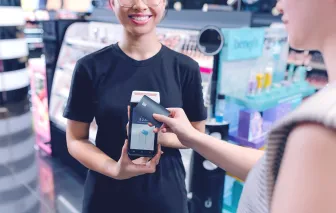In my previous blog post, I discussed the growth of QR codes as a payment method and the different types that are available in the market.
To recap, the first one is a Static QR Code that the merchants display for the consumers to scan and pay. The second one is a Dynamic QR Code – Merchant Displayed – which generates a unique QR code for every transaction for the merchant to display and the consumer to scan and pay. The third one is another Dynamic QR Code format – Consumer Displayed – which generates a unique QR code for every transaction on the consumer’s device for the merchant to scan and accept payment.
Now that we have a good idea of the different types of QR codes, let’s better understand what the best options for merchants are.
What Are the Best Options for Merchants?
There is no one best option; it depends on the goals and objectives of your business. In most countries, the rollout has been a mixture of static QR codes for very small merchants with no payment infrastructure today (for example, small business owners), whereas Dynamic QR codes work best where security and customer experience are more important – the type of environment where cards are currently accepted.
While it hard for QR codes to compete with hassle-free experience contactless payments offer, merchants need to consider trying it with generous offers or cashback schemes.
Future of QR Code Payments
Card-based payments are likely to be predominant in most countries for many years to come. Post-COVID, consumers have embraced NFC/contactless payments in unprecedented numbers. Market research shows that those consumers who have made the switch for hygiene reasons are very unlikely to go back to other ways, enjoying the speed and ease of the contactless process.
The adoption of a new payment type will depend on social acceptance and that, as we all know, is the hardest thing of all to predict. My prediction is that the most likely outcome in the coming decade is a state of co-existence. We will pay with a card (or mobile wallet emulating a card) for some things whilst making sure we get the perks offered by a QR code-based payment in other situations. As time goes on, I expect that consumer choice will simply grow with a mix of different payment options that will include QR codes.
From a merchant’s standpoint, they will need to assess what payment methods work best for their business and what their customers like to use. Most importantly, they would need to equip themselves with payment technology that has high processing power, large screen display, etc. to display a dynamic QR code and accepts other payment methods. This not only prepares merchants to be more flexible when it comes to accepting different types of electronic payments, but it also helps future-proof their solution. Payment terminals are typically in the field for at least five years so it’s a good idea to plan ahead.
No one can predict the future with certainty, but for merchants, keeping their options open is usually a very good start.
If you are looking to learn if accepting payments via QR codes is right for your business, get in touch with us.
Ian Benn is the Head of Strategy and Market Development at Ingenico











